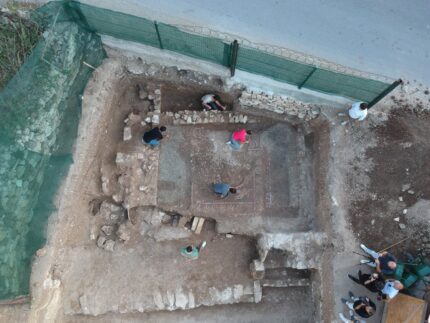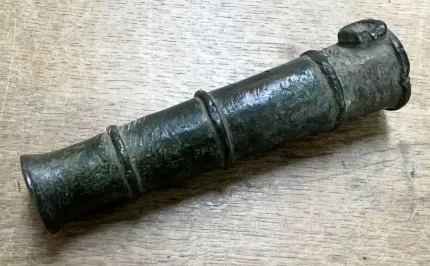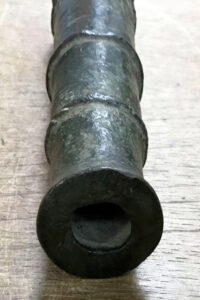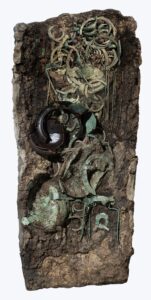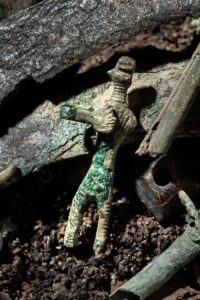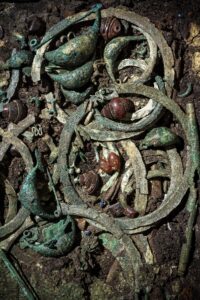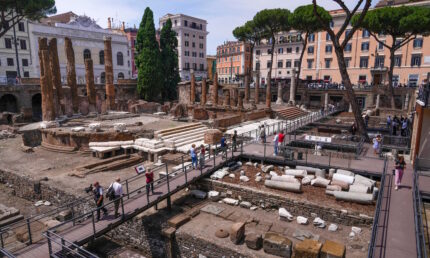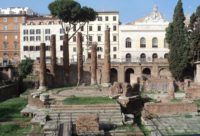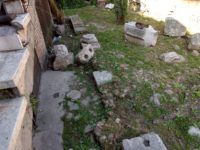A pebble mosaic floor from the early Hellenistic era (4th-1st c. B.C.) has been discovered in Sinop, Turkey, on the southern 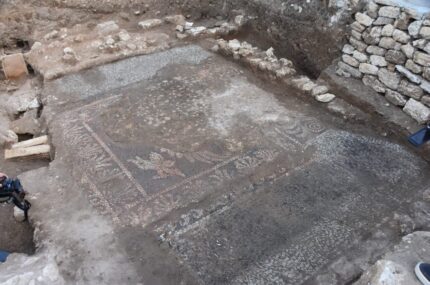 shore of the Black Sea. The mosaic features a winged Eros figure in the corner of the central panel with palmette and wave motifs in the borders. It dates to the middle of the 4th century B.C. Archaeologists believe it paved the floor of a wealthy family’s dining room.
shore of the Black Sea. The mosaic features a winged Eros figure in the corner of the central panel with palmette and wave motifs in the borders. It dates to the middle of the 4th century B.C. Archaeologists believe it paved the floor of a wealthy family’s dining room.
The floor was unearthed at the Balatlar Building Complex, a structure in the historic center of Sinop used variously as residences, public baths, a monastery and a church continuously from the Hellenistic era well into the 20th century. Excavations at the site began in 2010 and 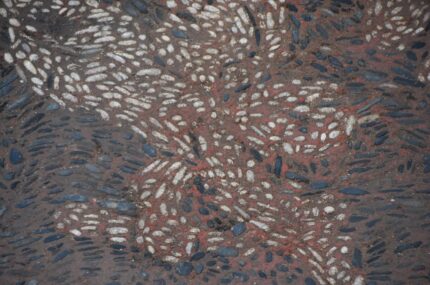 since then architectural features and artifacts from its many stages of occupation have been discovered. This is the first pebble stone mosaic found at the site in 11 seasons of digs. They are rare in buildings from the Classical and Hellenistic periods.
since then architectural features and artifacts from its many stages of occupation have been discovered. This is the first pebble stone mosaic found at the site in 11 seasons of digs. They are rare in buildings from the Classical and Hellenistic periods.
The city of Sinope was founded by Greek colonists from Miletus in the 7th century B.C. It established trade relationships with other cities on the south coast of the Black Sea and extended them inland to great prosperity between the 4th and 1st centuries B.C. The Cynic philosopher Diogenes, who carried a lamp in daytime looking for “an honest man,” was from Sinope.
Excavation of the mosaic floor is ongoing. After that, the floors will be stabilized and conserved with the ultimate goal of exhibiting it in situ as part of the Balatlar Building Complex archaeological park.
Metin Süren, the director of Culture and Tourism in Sinop, expressed the significance of this finding and said, “Sinop holds great importance in terms of its mosaic heritage. Previous excavations have already uncovered several magnificent mosaics in different locations. However, the ongoing excavation at the Balatlar Building Complex, which has been diligently carried out by the ministry for over a decade, has now brought us to a remarkable mosaic layer composed of pebble stones. These mosaics can be traced back to the Hellenistic period, offering a fascinating glimpse into the city’s ancient past.”
